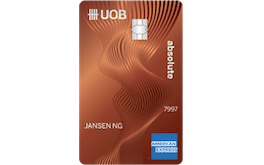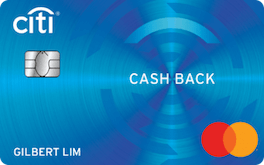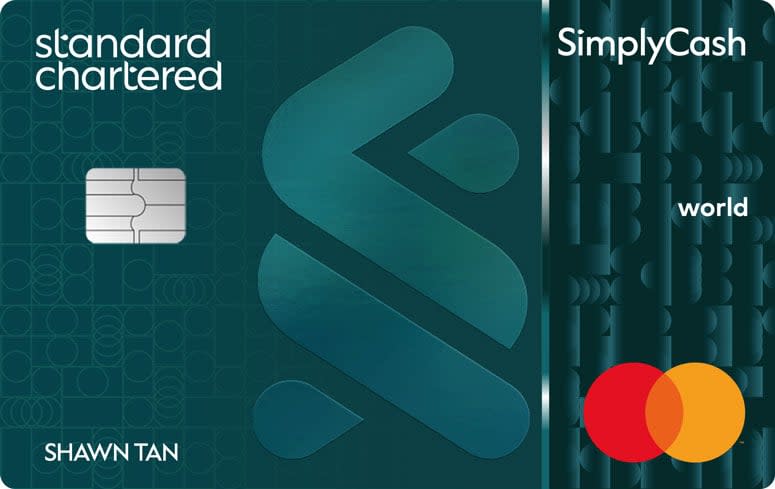LASIK Surgery in Singapore 2024: Where To Go And How Much Does It Cost?

Going on holiday with a bunch of Singaporeans but forgot your contact lens solution? Someone else will most certainly have some with them. Why? Because Singapore has the dubious honour of being the myopia capital of the world. Here, 65% of our kids are myopic by Primary Six, while 83% of young adults have myopia.
That means that almost anyone who’s not wearing glasses is either wearing contact lenses or has gotten LASIK surgery done. And I can understand why. Doesn’t LASIK sound tempting? Imagine never again having to deal with your glasses fogging up when you eat instant noodles or slipping down when you sweat. And you’ll never need to buy travel sized bottles of contact lens solution before a trip ever again!
But as with all things in Singapore, the big question is: how much does it cost? Let’s examine the options available at private clinics as well as the Singapore National Eye Centre.
LASIK Surgery in Singapore: How Much Does It Cost?
1. What is LASIK?
LASIK is short for Laser-Assisted In situ Keratomileusis. It’s a mouthful, so we appreciate the acronym. LASIK is a type of eye surgery where a laser is used to sculpt the cornea to improve short-sightedness (myopia), far-sightedness (hyperopia) and astigmatism.
The cornea is the transparent front part of the eye that lets light into the eyeball and retina so you can see. Think of it like the camera’s lens. When your cornea goes out of shape, the image on the retina becomes fuzzy.
LASIK helps to correct the misshapen cornea by using a laser to cut the surface of the cornea and create a thin flap. Another laser (an excimer laser) is then used to shape the middle section of the cornea. Once the cornea has been re-shaped, the flap is put back in place to cover the cornea. It then naturally adheres to the cornea, forming your eye’s own bandage.
It’s a 10- to 15-minute day surgery that requires only topical anaesthetic eyedrops. Improvements are usually immediate and within a day or two (a week at most), you can go back to life pretty much as normal, though you have to stay off water and contact sport for a month.
So, LASIK remains the most common and popular form of laser eye surgery in Singapore and around the world. Some estimates put the number between 28 and 40 million worldwide who have undergone LASIK.
There is a premium LASIK treatment called iLASIK. It involves creating a 3D map of the eye using Wavefront technology. This allows for a more intricate representation of your vision needs. Then, a bladeless laser technique that promises greater precision and safety is used to create the flap in the cornea. Of course, greater accuracy also demands greater cost.
Apart from LASIK, there are other types of laser eye surgeries:
Advanced Surface Ablation (Epi-LASIK, LASEK, PRK, TransPRK)
A no-flap, no-incision, surfaced-based procedure, Advanced Surface Ablation (ASA) involves the removal of a thin layer of cells on the surface of the cornea so the laser can shape the cornea. A protective contact lens is then placed over the eye till the cells grow back in a few days.
This is the best option for those with thin corneas and who would not be eligible for LASIK. However, it requires a relatively longer treatment and recovery time (3-5 days).
ReLEx SMILE (Refractive Lenticule Extraction, Small Incision Lenticule Extraction)
Like ASA, ReLEx SMILE is a flapless procedure but its recovery time is faster. A laser creates a disc-shaped piece of corneal tissue (lenticule) just beneath the surface of the cornea. The same laser then makes a small cut on the cornea to remove the lenticule. It’s the removal of the lenticule that changes the way light bends into the eye, clearing the vision.
This method doesn’t work for long-sightedness and isn’t as effective for high astigmatism or low myopia.
Collagen Cross-Linking (CXL)
You might be offered CXL in addition to your laser eye surgery. This extra procedure aims at reducing both the risk of your degree returning and that of your cornea losing its shape which is known as corneal ectasia (though this is rare).
CXL is done during your laser surgery. Vitamin B12 drops are applied to the eye before UV light is shone on it for a minute. This activates the collagen fibres on your eye to cross-link and strengthen your cornea after LASIK.
How do I choose a laser eye surgery?
According to Atlas Eye Specialist Centre, here are 4 important factors to consider:
Corneal thickness and shape: Individuals with thin corneas may not be suitable for LASIK. ASA is a good option instead.
Degree of short-sightedness: If you’re only a little myopic, ASA is recommended. Conversely, low myopia or long-sightedness make ReLEx SMILE a poor choice.
Degree of astigmatism: ASA and ReLEx SMILE aren’t the best choices if you have high astigmatism.
Lifestyle and occupation: Do you play a contact sport and expect to be in tussles? You might want to avoid LASIK.
Cost comparison of procedures: LASIK vs iLASIK vs ASA vs ReLEx SMILE vs CXL
For the sake of comparison, I’ve included costs at the Singapore National Eye beside the public hospital costs.
Procedure | Cost at private clinics | Cost at the Singapore National Eye Centre |
LASIK | $3,900 – $5,000 | – |
iLASIK | Add 30% – 50% more to your LASIK bill | $1,613.20 – $1,885.70 |
ASA (Epi-LASIK, LASEK, PRK, TransPRK) | $3,800 – $5,000 | $1,962 – $2,180 |
ReLEx SMILE | $5,300 – $6,000 | $2,384.92 – $2,493.92 |
CXL (add on) | From $1,200 | $3,900 to $5,000 |
Source: Atlas Eye Specialist Centre
Note that the fees above may or may include consultation and review fees. These typically cost $100 to $300 per type of fee.
At the National Eye Centre, your suitability assessment generally costs $86.40 – $170.04 while consultation fees before the procedure are S$156.96 (Consultant) / S$177.67 (Senior Consultant).
2. Does LASIK have any side effects?
The short answer is: Yes.
The long answer is: Yes, but they are minimal, bearable and often temporary.
Dry eyes: This is caused by the creation of the corneal flap and the effect of the laser on the cornea which cuts the corneal nerves responsible for normal tear production. It should resolve itself in a few months.
Night vision issues: Seeing halos, glares and starbursts at night is especially common in people with high myopia or high astigmatism. This goes away gradually within nine months to a year.
Discomfort and itchiness: The discomfort is part of the healing and will go away a few hours after the procedure. Closing your eyes or sleeping should alleviate the sensation. The itch should disappear in a few days. Using preservative-free artificial tears eye drops will help.
Back to top
3. Risks associated with LASIK
Thinning cornea: This is rare (global incidence of only 0.04% to 0.06%) but it does happen. The cornea becomes irregular and unstable in a condition known as post-LASIK ectasia.
Problems with cataract surgery in the future: During cataract surgery, the lens in your eye is replaced with an artificial one to clear your vision. Because LASIK permanently changes your cornea, the lens calculations become more difficult since they requires a normal cornea for correct reading. So, you might end up having to wear glasses after your cataract surgery, which you would not otherwise have had to do.
Inaccurate eye pressure readings: Glaucoma is a condition where there’s increased pressure on the eyeball. This causes damage to the optic nerve that can lead to poor eyesight or even blindness. LASIK makes reading your eye pressure more of a challenge, leading to a lower reading.
Regression: Your myopia could return, especially if it was very high. But odds are that the improvements will be permanent and will require only minor adjustments if the shape of your cornea continues to change.
4. Who can (or can’t) benefit from LASIK?
Like any procedure, there are ideal candidates and less than ideal ones for LASIK.
You can go for LASIK if:
You are at least 18 years old (some say 21 years old)
Your degrees have stabilised for at least a year
You are in good health
If you’re any younger, your eye-sight may not have stabilised yet. If you are in your 40s, you may need reading glasses as you age even with LASIK.
LASIK isn’t advisable if you:
Have very high refractive error, for example myopia of more than 1000 degrees, hyperopia of more than 400 degrees, and astigmatism of more than 400 degrees. Results tend to be less predictable and satisfactory for patients with these conditions.
Suffer from severe dry eye syndrome
Have thin corneas relative to the degree of improvement you want
Have irregular-shaped or steep corneas
Have existing eye injuries or diseases such as cataract, glaucoma, diabetic eyes or retina problems
Are hoping to correct presbyopia (long-sightedness due to age)
Are pregnant or nursing
Hormonal changes during pregnancy or nursing can cause vision to fluctuate. You may need to wait 6 months after pregnancy and nursing before undergoing LASIK.
5. Where can I get LASIK procedures done? Private vs public clinics
As with all medical procedures, you have your choice of public institutions and private clinics for your LASIK procedure. Public institutions are generally, though not always, the cheaper options.
LASIK in public institutions
There are a few of these that you can go to for LASIK:
Singapore National Eye Centre (SNEC)
National University Hospital
Tan Tock Seng Hospital (they no longer publish their prices online)
LASIK clinic | Price |
– $1369 to $3,147 (bladeless, ReLex Smile and PRK LASIK; depending on seniority of consultant; includes post-operation check-ups) | |
– $1,613.20 to $2,493.92 (depending on seniority of consultant) |
Source: SNEC, NUH
From our research, it would seem that SNEC is the most commonly chosen route for public clinics. They used to be one of the cheapest options but have since hiked up for their prices, which are now almost comparable to those being charged in the private sector.
LASIK in private clinics / hospitals
Here are some examples of private clinics and their LASIK prices (for both eyes).
LASIK clinic | Price |
From $3,535 | |
From $3,467 | |
From $3,220 | |
From $3,250 | |
From $4,188 |
Note that there will be additional charges for your consultation before doing the actual procedure. This usually ranges from $100 to $300, depending on seniority of your consultant.
6. Can I use Medisave or insurance to pay for LASIK?
With a bill that will run into the thousands, financing the improvement of your eye-sight can be a real issue. So, here are the answers to some of the questions you may have about paying for your LASIK treatment.
Can I use my Medisave?
In the vast majority of cases, no. Medisave is meant to be used for medical and surgical procedures. While LASIK is surgical, it isn’t so much a medical procedure as it is a cosmetic one.
But, you can use Medisave to defray costs if:
There is a difference of 300 degrees or more (3 diopters) between your two eyes
LASIK is performed to correct errors from previous procedures such as a cataract surgery
Your doctor certifies that you can’t tolerate contact lenses or spectacles.
ALSO READ: Understanding Your MediSave Account in 2024 & How to Make the Most of It
Will my insurance cover LASIK?
The short answer? No. The vast majority of insurance policies don’t cover LASIK because it’s an elective, cosmetic surgery. In other words, as far as they’re concerned, you don’t really need it, you just want it to look better. In addition, most people in Singapore have worn glasses from a young age, in which case the myopia is considered a pre-existing condition.
This is true for the most common type of health insurance policies Singaporeans usually buy, that is, Integrated Shield Plans (IP) that offer coverage for hospitalisation.
It is possible to find overseas insurers that do offer some sort of coverage for LASIK. That said, you might have to buy a specific vision insurance plan, and even then, all you might get is a discount on your LASIK bill.
These types of plans are usually expensive for what they offer and, for Singaporeans living at home, simply not worth the cost. In addition, you would have to check thoroughly to ensure that you are eligible, and that coverage is not limited to a specific class of LASIK patients.
7 .Which credit card should you use to pay for LASIK?
Yes, LASIK isn’t cheap. But it does have its pluses and there are ways to make the costs manageable.
One way is to charge your bills to a cashback credit card to get a rebate on your bill. Since LASIK typically costs at least $3,000, you’ll want to use a card without a cashback cap, like one of these:
MoneySmart Exclusive
UOB Absolute Cashback Card
More Details
Cash Back Features
Enjoy 1.7% limitless cashback across all your overseas spend and local retail spend including groceries, insurance, as well as big purchases such as home furnishings, electronics and luxury shopping.
Enjoy 0.3% limitless cashback on generally excluded spend such as Grab mobile wallet top-up, school fees, healthcare and government services.
MoneySmart Exclusive
LUCKY DRAW | GET UP TO S$18,000 WORTH OF PRIZES
Citi Cash Back Card
MoneySmart Exclusive:
[FASTER GIFT REDEMPTION | GIVEAWAY]
Get a Sony WH-1000XM5 Wireless Noise Cancelling Headphones (worth S$589) or an Apple iPad (9th Gen), 64GB (worth S$508.30) or S$420 Lendlease E-Vouchers (can be used at 313@somerset, Jem, Parkway Parade, PLQ) or S$300 Cash via PayNow, in as fast as 6 weeks from meeting the S$500 spend criteria!
PLUS stand a chance to get a Rolex Submariner 124060 (worth S$15,521) or an Apple iPhone 15 Pro, 128GB (worth S$1,664.25) or a Sony PlayStation®5 (SLIM) Digital Edition (worth S$669) when you apply through MoneySmart! T&Cs apply.
Valid until 15 May 2024

More Details
Cash Back Features
Base cashback rate: 0.2% on all retail purchases
An additional 5.8% cashback will be applied to your dining and groceries transactions if you spend at least S$800 on your card per statement month
An additional 7.8% cashback will be applied to your private commute and petrol transactions if you spend at least S$800 on your card per statement month
Total cash back is capped at S$80 combined across all retail spend per statement month
20.88% savings at Esso and Shell
Cashback earned will be accumulated and automatically credited to your credit card statement when it reaches S$50. You will also be able to track your cashback earned on the Citi Mobile App
MoneySmart Exclusive
1.5% UNLIMITED CASHBACK
Standard Chartered Simply Cash Credit Card
MoneySmart Exclusive:
Get attractive gifts like a Nintendo Switch OLED (worth S$549) or a Hinomi Q1 Ergonomic Chair (worth S$499) or a Apple Watch SE (worth S$382.50) or a Sony WF-1000XM5 Wireless Headphones (worth S$429) or up to S$370 Cash via PayNow* when you apply and meet the relevant spend criteria! T&Cs apply.
Valid until 15 May 2024

More Details
Cash Back Features
1.5% cashback awarded for all eligible purchases, such as dining, online shopping, local and overseas spend
Cashback terms and conditions: General exclusions such as bills, payments to educational, financial, and governmental institutions, and GrabPay top up apply
Sponsored
MoneySmart Exclusive
Unlimited Cashback
American Express True Cashback Card
MoneySmart Exclusive:
Get a Nintendo Switch Lite (worth S$309) or S$180 Cash via PayNow when you apply for an American Express True Cashback Card and spend a min. of S$500 in Qualifying Spends within the first month of card approval! T&Cs apply.
Valid until 15 May 2024



More Details
Cash Back Features
Unlimited & Immediate Cashback - No min spend and no cap on how much you earn. Get your cashback in the same month's statement.
3% Cashback on all eligible purchases, up to $5,000 spend in the first 6 months for new Card Members.
1.5% unlimited Cashback on all subsequent eligible purchases with no minimum spending and no earn cap.
Found this article useful? Share it with anyone considering LASIK.
The post LASIK Surgery in Singapore 2024: Where To Go And How Much Does It Cost? appeared first on the MoneySmart blog.
MoneySmart.sg helps you maximize your money. Like us on Facebook to keep up to date with our latest news and articles.
Compare and shop for the best deals on Loans, Insurance and Credit Cards on our site now!
The post LASIK Surgery in Singapore 2024: Where To Go And How Much Does It Cost? appeared first on MoneySmart Blog.
Original article: LASIK Surgery in Singapore 2024: Where To Go And How Much Does It Cost?.
© 2009-2018 Catapult Ventures Pte Ltd. All rights reserved.

 Yahoo Finance
Yahoo Finance 



